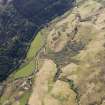Pricing Change
New pricing for orders of material from this site will come into place shortly. Charges for supply of digital images, digitisation on demand, prints and licensing will be altered.
Balvraid 2
Cup Marked Stone (Prehistoric)
Site Name Balvraid 2
Classification Cup Marked Stone (Prehistoric)
Canmore ID 11794
Site Number NG81NW 3
NGR NG 84992 16321
Datum OSGB36 - NGR
Permalink http://canmore.org.uk/site/11794
- Council Highland
- Parish Glenelg (Lochaber)
- Former Region Highland
- Former District Lochaber
- Former County Inverness-shire
NG81NW 3 8496 1635.
(NG 8496 1635) Cup Marked Stone (NR)
OS 6"map, Inverness-shire, 2nd ed., (1902)
A prostrate stone, over 6' long, is covered with cup-markings. Still in 'mint' condition.
J R Allen 1882; J Y Simpson 1868; Information in letter from J Gaylard to OS 5 January 1956.
Generally as described; cup marks are faint.
Surveyed at 1:2500 scale.
Visited by OS (R L) 3 October 1966.
There is a similar flat stone bearing two cup marks c. 20.0m E of the other, on the S side of the track.
Visited by OS (A A) 27 June 1974.
Note (29 May 2019)
Date Fieldwork Started: 29/05/2019
Compiled by: ScRAP
Location Notes: This boulder lies in rough grazing in flat terrain on the S edge of the farm track leading to Dun Crugaig, about 40m E of the field gate and 100m E of Balvraid Croft. The land S of the panel falls away steeply to the burn, which is situated roughly 40m to the S. There is a wide earth and stone bank running N-S along the field edge to the W, with some large stones on top of it that may have been cleared from the field.
This panel is the second cupmarked stone mentioned in the Canmore record (Canmore 11794). The first panel, reported as being covered in cupmarks, could not be located despite an extensive search in the area, and may have been removed or covered since the last record in 1966.
Panel Notes: This rectangular stone measures about 2.2x0.9m and is 0.4m thick. Its flat upper surface has a series of parallel longitudinal ridges running N-S along its long axis. There is some evidence of quarrying or damage along its N edge. There is 1 possible cupmark on the upper surface, although this is asymmetric and may well be a natural feature, and at least 2 shallow natural depressions.












































